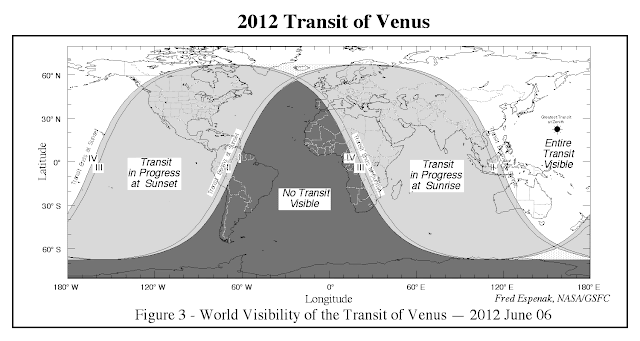June 5 transit of Venus won't happen again for 105 years
Venus transits across the sun as seen over Hong Kong on June 8, 2004. There have only been seven such transits since 1631. The eighth will take place on June 5, 2012, and will be the last chance that people alive today will have to witness the rare celestial event. The next transit won't occur until 2117
If you happen to glance at the sun in the early evening next Tuesday and notice a black dot moving across it, fear not, that's not dust in your eye or an early sign of glaucoma — it's Venus. Our nearest planetary neighbour will be passing between the Earth and the sun starting at 6:04 p.m. ET on June 5 and will be aligned in such a way that its passage will be visible with the naked eye. The transit, as it's known, will last about six hours, but in most parts of Canada, it will be visible for only a few hours before sunset. "The view is best the farther west you go, but, actually, it's pretty good for most of Canada," said Mike Reid, a lecturer in the department of astronomy at the University of Toronto and a public outreach co-ordinator at the university's Dunlap Institute for Astronomy and Astrophysics.
Eastern Australia, Asia will have best vantage points The best view of the transit will be in the middle of the Pacific Ocean, but people in eastern Australia, New Zealand, Japan, Philippines, Korea, parts of China and Russia and Pacific nations like Papua New Guinea will also be able to see Venus's entire journey across the sun — although for them it will be occurring the morning of June 6.
Europeans, and people in eastern Africa, the Middle East, India and places in between will have to get up very early to catch a glimpse of the transit. West Africa, Portugal and parts of Latin America and Spain will miss it altogether.
"Earth orbits the sun slower than Venus. If they both orbited in the same plane, like runners running around a track, then every time Venus 'lapped' Earth, there would be a transit," Reid said.
"However, Venus's orbit is 'tilted' relative to Earth's orbit, so the only way Venus and Earth can line up with the sun is if Venus laps Earth exactly when Venus happens to be passing through the plane of Earth's orbit.
"That only occurs at two points in Venus's orbit (the two points where the ring of Venus's orbit 'punctures' Earth's orbit). The odds of Venus happening to be at one of those two points when it 'laps' Earth are small."
When transits do occur, they occur in pairs, with each transit in a pairing separated by eight years, and then not again until 105.5 or 121.5 years later. The last transit was in June 2004, and after this year's transit, the next one won't occur until December 2117.
.jpg)

No comments:
Post a Comment